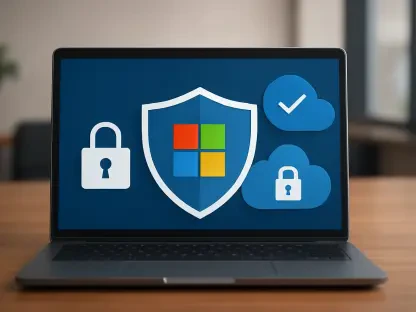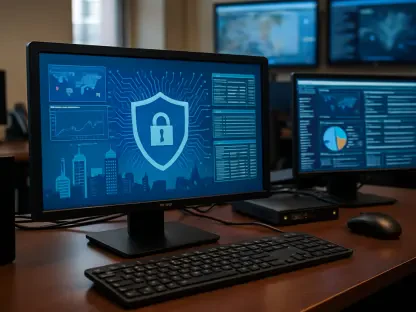In an era where cyber threats loom larger than ever, a staggering statistic sets the stage: over 60 vulnerabilities were addressed in Microsoft’s November Patch Tuesday update, including a zero-day flaw in the Windows Kernel actively exploited in the wild. This critical security event has sparked intense discussion among cybersecurity professionals, highlighting the escalating sophistication of attackers targeting core system components. This roundup gathers diverse opinions and actionable tips from industry experts to unpack the severity of these flaws, the implications for organizations, and strategies to bolster defenses. The purpose is to provide a comprehensive view of the challenges and solutions surrounding this pivotal update, ensuring system administrators and users alike are equipped to navigate an increasingly hostile digital landscape.
Diving into November Patch Tuesday: What Experts Are Saying
The November Patch Tuesday has become a focal point for cybersecurity discourse, with Microsoft addressing a wide array of vulnerabilities, including a severe zero-day exploit. Industry leaders emphasize that this update cycle reflects a growing trend of attackers zeroing in on critical system elements like the Windows Kernel to maximize damage. Their collective concern centers on the active exploitation of such flaws, which can lead to devastating outcomes if left unpatched.
Beyond the headline-grabbing zero-day, experts note that the sheer volume of vulnerabilities patched—over 60—underscores the persistent battle against cyber threats. Some professionals argue that while Microsoft’s response is commendable, the frequency of critical updates suggests deeper systemic challenges in software security. This roundup aims to distill these varied perspectives into a clear picture of the risks and necessary actions for organizations worldwide.
A key takeaway from expert discussions is the urgency of adapting to an evolving threat landscape. Many stress that as attack methods grow more complex, relying solely on patches may not suffice. Their insights point toward a need for proactive measures alongside timely updates, setting the stage for a deeper exploration of specific vulnerabilities and broader security trends.
Breaking Down the Threats: Expert Analysis of Critical Vulnerabilities
Unpacking CVE-2025-62215: The Windows Kernel Zero-Day Risk
CVE-2025-62215, a race-condition and double-free flaw in the Windows Kernel, has drawn significant attention for its potential to allow low-privileged attackers to escalate to system-level access. Cybersecurity specialists highlight that while exploiting this vulnerability demands precise timing and local access, its impact could be catastrophic when paired with other exploits. This chaining capability raises alarms about widespread network compromise and ransomware deployment.
Differing views emerge on the practicality of exploiting this flaw. Some experts caution that its complexity might deter less-skilled attackers, suggesting a focus on high-value targets by advanced threat actors. Others counter that the risk lies in the potential for exploit kits to simplify the process, making it accessible to a broader range of malicious entities over time.
A consensus forms around the need for robust system hardening to mitigate such risks. Professionals advocate for immediate patching but also stress the importance of monitoring for unusual activity that could indicate attempted exploitation. Their advice underscores a multi-layered approach to counter the sophisticated strategies employed by modern cybercriminals.
CVE-2025-60724: Remote Code Execution Peril in GDI+ Library
Another critical issue, CVE-2025-60724, affects the Graphics Device Interface (GDI+) library, boasting a CVSS score of 9.8 due to its ease of exploitation via malicious metafiles. Industry voices warn that this remote code execution bug poses a severe threat to public-facing web servers, where attackers can trigger heap overflows with minimal effort. The simplicity of the attack vector has prompted urgent calls for action.
Opinions vary slightly on the scope of impact, with some experts focusing on the vulnerability’s reach across diverse systems, while others emphasize its particular danger to organizations with exposed applications. Despite these nuances, there is broad agreement that administrators must prioritize patching to prevent potential breaches that could compromise sensitive data.
Beyond patching, specialists suggest additional safeguards such as restricting file uploads on web servers and enhancing monitoring for suspicious interactions. Their collective input paints a picture of a vulnerability that, while manageable with swift action, could have far-reaching consequences if ignored, especially in environments reliant on user-supplied content.
Patch Tuesday Patterns: Insights on Recurring Attack Vectors
Looking at the broader November update, experts note that Microsoft patched 29 elevation of privilege issues, 16 remote code execution flaws, and other critical bugs, revealing persistent attack patterns. Many in the field point out that these recurring vulnerability types mirror global cybercrime trends, where Windows systems are prime targets for lateral movement and data exfiltration. This consistency in attack focus is a red flag for organizational security.
Some professionals express concern that regular updates, while essential, may lull organizations into a false sense of security. They argue that the predictable nature of these flaws—privilege escalation and remote attacks—demands more than just reactive patching. A push for advanced threat detection and response mechanisms emerges as a common recommendation to stay ahead of evolving exploits.
Contrasting views highlight the resource constraints faced by smaller entities, which may struggle to implement comprehensive defenses. Experts sympathetic to these challenges suggest starting with prioritized updates for high-severity flaws while gradually building toward more robust systems. This balanced perspective aims to address the diverse realities faced by different organizations in tackling such widespread issues.
Legacy System Struggles: Windows 10 End of Life Concerns
With Windows 10 having reached its end of life, the Extended Security Updates (ESU) program remains the only lifeline for continued patches, yet enrollment issues have complicated the process. Industry observers note that Microsoft’s out-of-band fix for ESU enrollment failures demonstrates responsiveness, but it also exposes the ongoing difficulties of securing outdated systems. This situation affects countless users still reliant on legacy software.
Opinions differ on the long-term viability of supporting such systems, with some experts advocating for accelerated migration to newer platforms to avoid prolonged exposure. Others recognize the financial and logistical barriers to upgrading, suggesting that ESU enrollment, despite its hiccups, offers a critical stopgap for maintaining security in the interim.
A shared concern is the future of legacy support as more systems age out of standard updates. Cybersecurity leaders stress the importance of strategic planning to balance cost and risk, urging organizations to assess their exposure and explore alternatives. Their insights highlight a broader challenge of sustaining security in a post-support environment amidst limited resources.
Practical Tips from the Field: Securing Systems Effectively
Drawing from expert commentary, the critical nature of the Windows Kernel zero-day and remote code execution flaws demands immediate attention through patching high-severity vulnerabilities. Many professionals recommend automating patch deployment to ensure no critical updates are missed, particularly for organizations managing large-scale environments. This approach minimizes the window of opportunity for attackers.
Additional advice centers on enhancing overall security posture beyond updates. Suggestions include implementing strict access controls to limit the impact of privilege escalation flaws and deploying endpoint detection tools to catch early signs of exploitation. These measures aim to create a resilient defense against the multifaceted threats highlighted in this update cycle.
For those navigating Windows 10 end-of-life challenges, experts advise swift enrollment in the ESU program if migration isn’t feasible. They also encourage regular system audits to identify unpatched or vulnerable components, alongside continuous monitoring for unusual behavior. These actionable steps, derived from diverse industry input, provide a roadmap for mitigating risks in a complex threat landscape.
Reflecting on a Critical Update: Next Steps for Cybersecurity
Looking back, the November Patch Tuesday served as a stark reminder of the relentless pace of cyber threats, with over 60 vulnerabilities addressed and a zero-day exploit in active use. Expert discussions revealed both the technical intricacies of flaws like the Windows Kernel vulnerability and the urgent need for action on remote code execution risks. The insights gathered painted a vivid picture of a cybersecurity community united in recognizing the severity of these issues.
Moving forward, organizations should focus on integrating automated patching systems to streamline updates and reduce human error. Exploring investments in advanced threat intelligence could further enhance the ability to anticipate and counter emerging attack vectors. Additionally, planning for legacy system transitions remains vital to avoid prolonged exposure as support windows close.
As the digital landscape continues to evolve, staying proactive is paramount. Consideration of hybrid security models that combine vendor updates with third-party tools might offer a sustainable path to resilience. These steps, inspired by the collective wisdom of industry leaders, aim to empower users and administrators to fortify their defenses against an ever-adapting array of cyber challenges.









